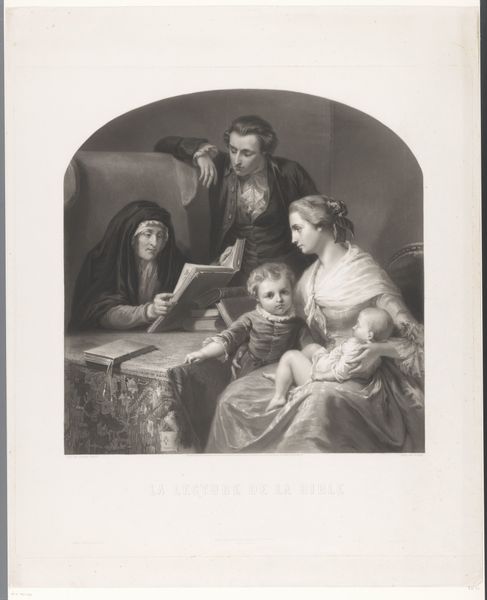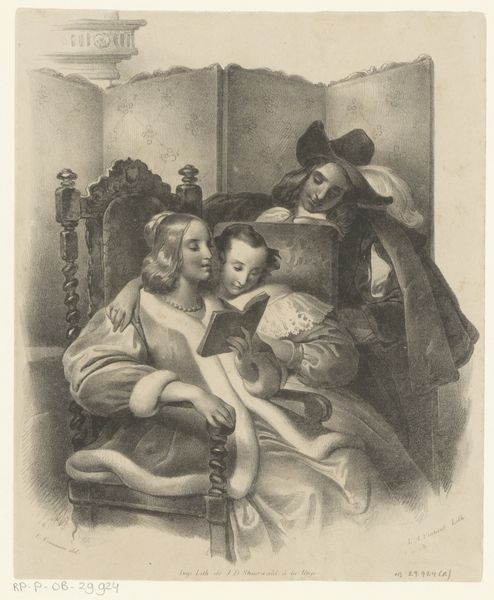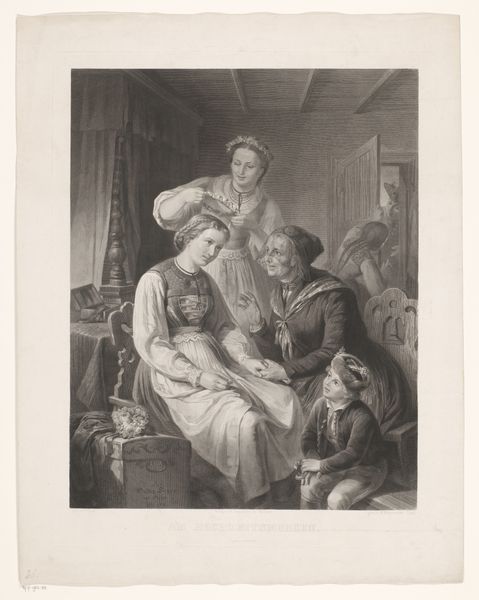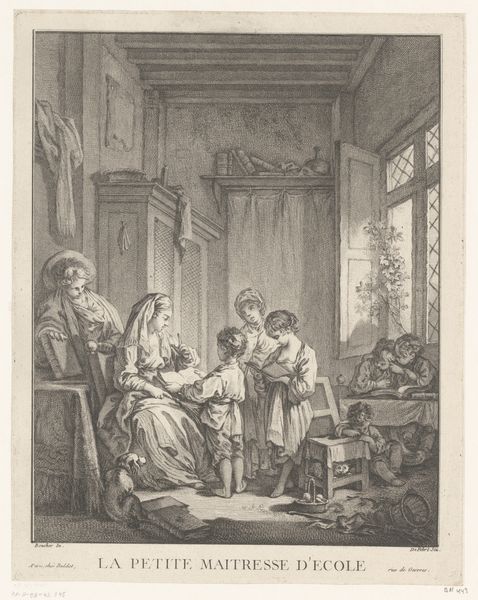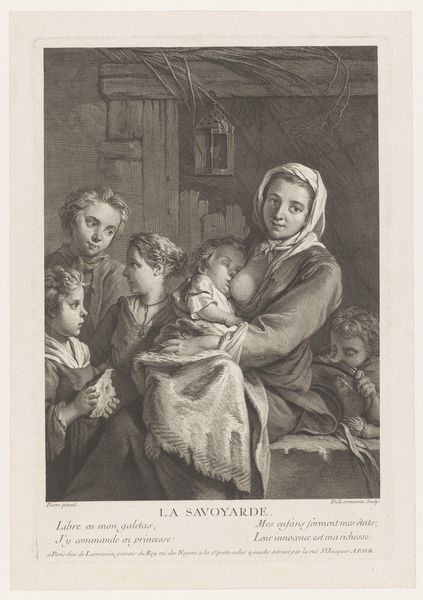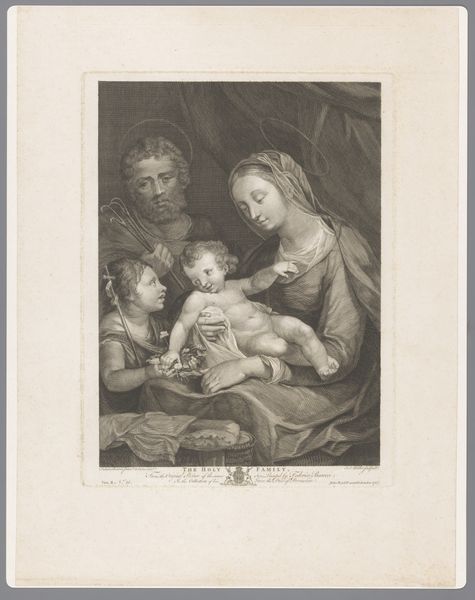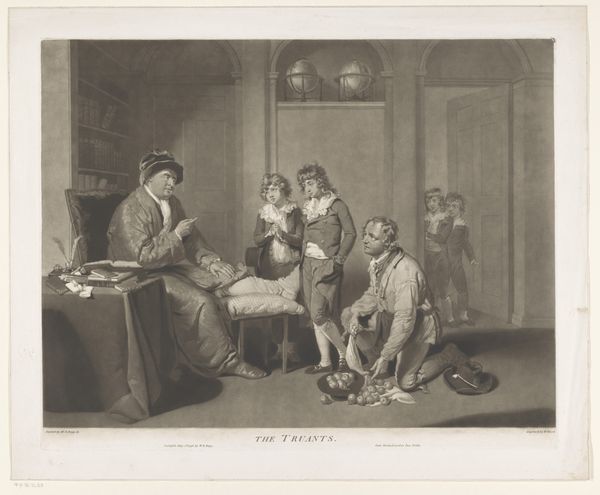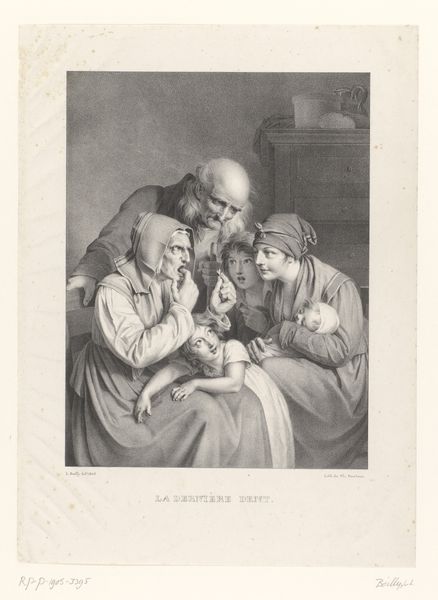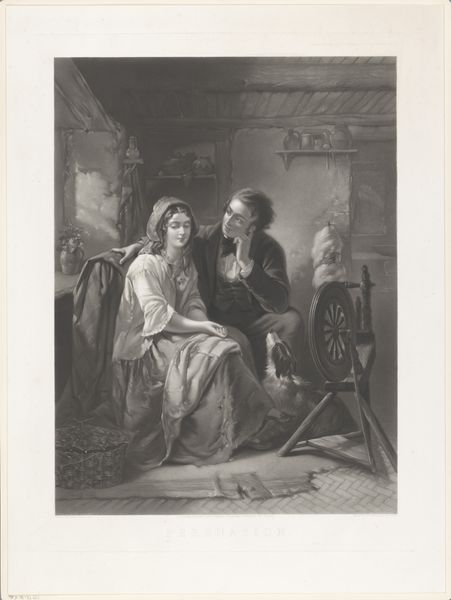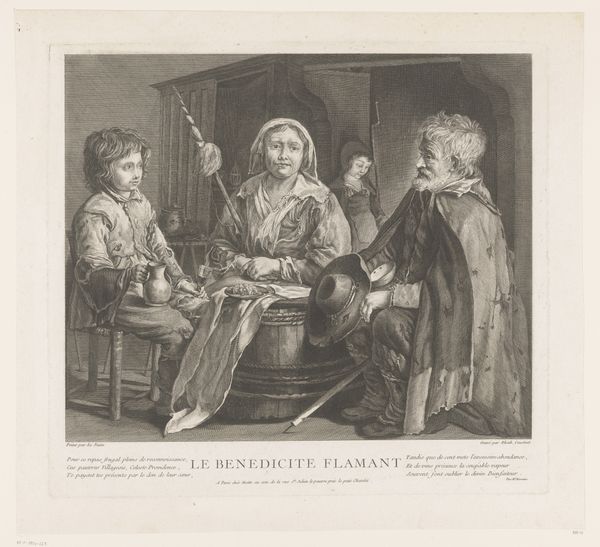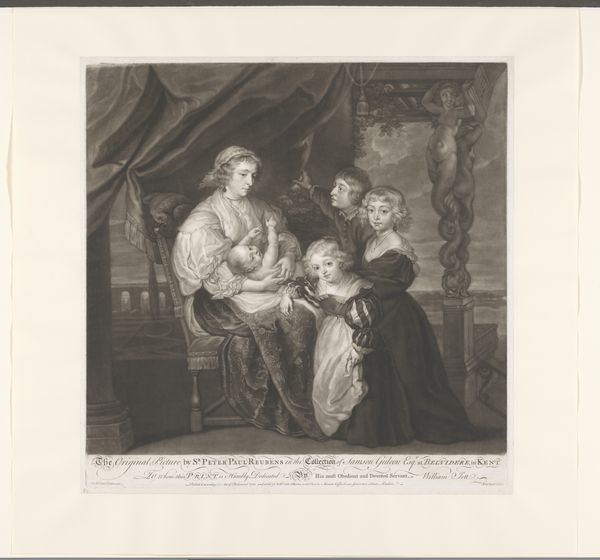
Dimensions: height 415 mm, width 348 mm
Copyright: Rijks Museum: Open Domain
Editor: This is "Oude vrouw leest voor aan gezin," or "Old Woman Reading to a Family," a print made in 1859 by Carel Christiaan Antony Last, housed here at the Rijksmuseum. There’s such a serene and domestic feeling. What can you tell us about it? Curator: Well, considering its context, this serene scene feels almost… rebellious. Think about the role of women in mid-19th century Dutch society, confined to the domestic sphere. Last is not merely depicting a quiet moment, but highlighting the critical role women, especially older women, played in transmitting culture, values, and potentially subversive ideas. Editor: Subversive ideas? How so? Curator: Notice who is literate here – the women. What’s being read? We cannot tell, but access to literacy, to texts, was often a tool of empowerment. To me this image subtly questions power dynamics by showing women as knowledge holders and transmitters. How might that reading challenge conventional views of women's agency at that time? Editor: So, you're saying it's not just a sentimental family scene but a quiet assertion of female intellect and influence? The domestic sphere as a space for resistance, almost? Curator: Exactly! And the choice of print, a medium accessible to a wider audience, reinforces that aim. It allowed for broad circulation of these… progressive ideas about family, womanhood, and social standing. The composition directs the viewer to question patriarchal structures within the intimate setting of family life. Editor: That's fascinating; I'd initially missed those undercurrents. It completely shifts my understanding. Curator: Indeed! Recognizing these subtle interventions makes engaging with historical art much more rewarding, and personally meaningful. It's about excavating voices that challenged norms.
Comments
No comments
Be the first to comment and join the conversation on the ultimate creative platform.
